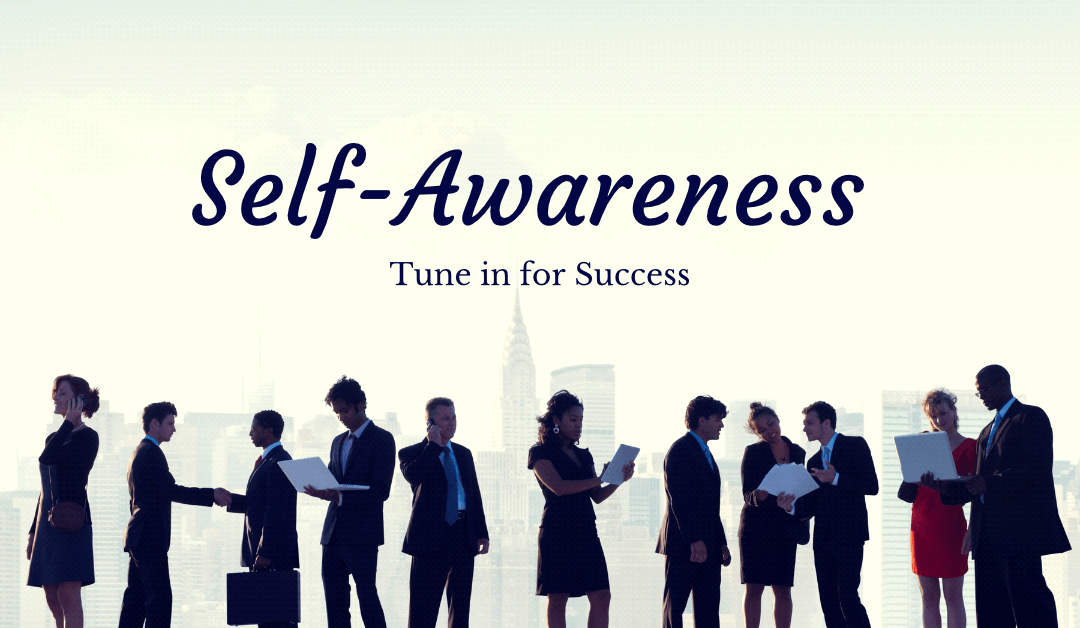Emotional Intelligence is the second most important skill-set for success, no matter how you define success. (What’s the most important skill, you ask? A growth mindset because then you can learn anything, including EI skills.) Self-awareness is the cornerstone of EI because all the other EI skills build on it.
Already convinced? Great! Jump to the What or the How and practise self-awareness today. Not sure what I’m talking about? Keep on reading!
The Why
What are EI skills good for?
When you have a high emotional quotient (EQ), meaning when you apply Emotional Intelligence skills, you can:
- manage your emotions to make sure they are appropriate for the situation you are in.
- motivate yourself to get anything done.
- identify other people’s emotions and feelings.
- manage other people’s emotions. Yes, actually change how people feel.
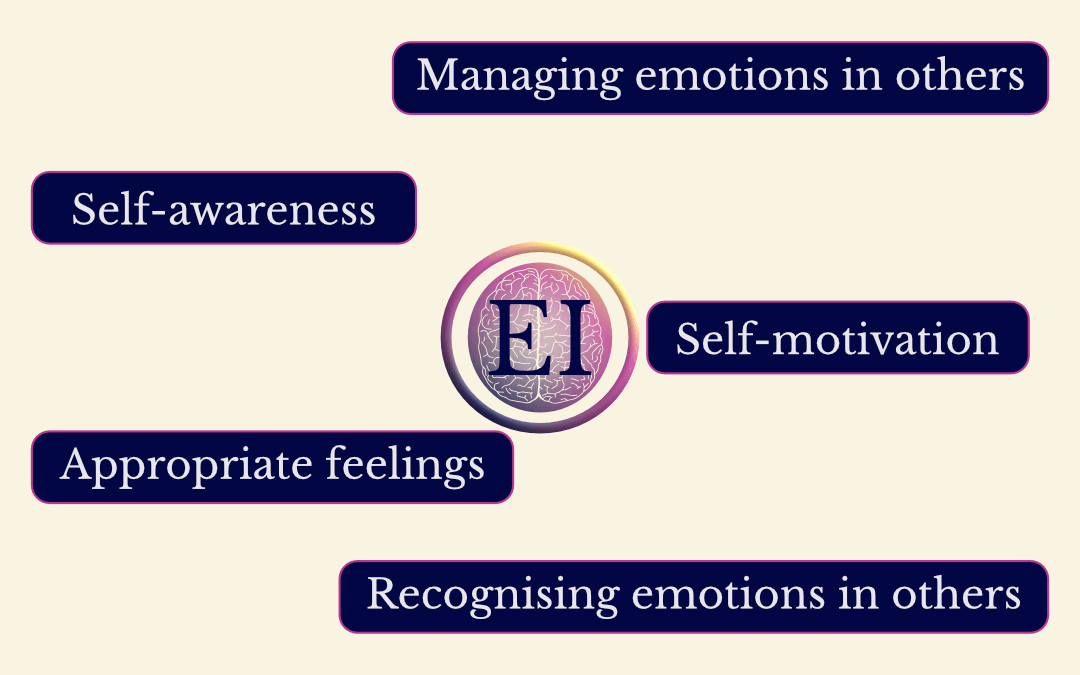
If one or all of the above sound like magical superpowers to you, that’s because you just realised that Emotional Intelligence is a set of Life Skills because each one improves your life.
The best part is, though, that EI skills are not superpowers. They are skills, meaning they can be learned and practised like any other skill you’ve mastered before. Some of the skills I listed might be more difficult for you than others, but if you really want to learn them and are willing to put in the practice, you can learn EI skills too.
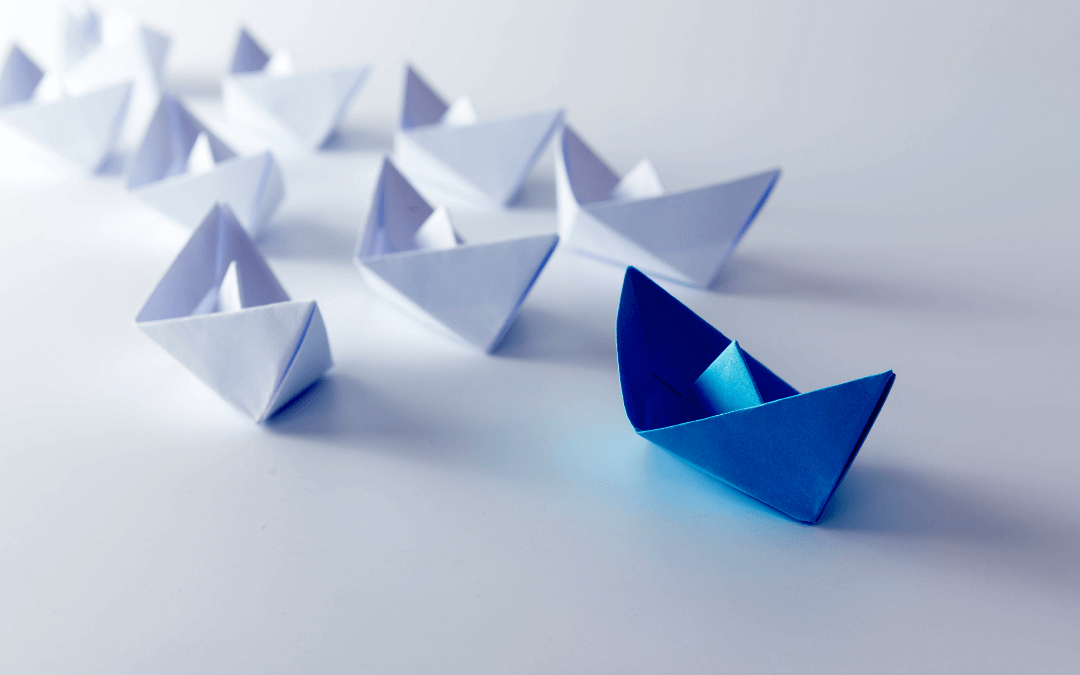
In fact, you might have recognised the skills I listed from courses that are offered now, especially leadership courses, because EI skills help you manage people. You might even have already taken one or several leadership courses, which is fantastic! I am thrilled that more professionals recognise the importance of EI in the workplace. There’s just one tiny detail that is still overlooked.
If you’ve taken a leadership skills course before and tried the techniques you learned, but for some reason they didn’t work, it’s because you jumped straight to the top of the ladder. Of course, you are floundering. You missed the first rung: Self-awareness.

The other EI skills without self-awareness
Here’s Susan’s story to show you what happens when you try to use EI skills without self-awareness.
Susan went to a leadership seminar. She learned to read the signs for major emotions, like when someone is genuinely smiling, the edges of their eyes crease. And when someone disapproves of what you are saying but they can’t tell you, their face freezes in whatever position it was in before. And so on.
Susan also learned what language to use in a difficult work conversation. The course even taught her the perfect vocabulary depending on the emotional state the person she’s talking to is in.
Great stuff and perfect timing because Susan needs to tell Linda, the newbie at work she’s mentoring, that she didn’t do a good job on the last project they worked on together. Susan wants to be promoted, so this is a fantastic opportunity for her to show off her new leadership skills and how much she’s learned during that expensive seminar her boss paid for.

In the meeting, Susan notices immediately that Linda’s smile is fake as soon as she mentions the project. Susan is thrilled. Her skills are already working. So she shares the criticism using the vocabulary she learned to lessen the blow. She adds encouraging phrases too. This is going so well!
A week later, Susan’s boss asks her for a meeting. Linda complained but Susan has no idea why.
Emotions Influence everything
Between 70-93% of our communication is non-verbal. Yes, you can absolutely learn how and where to sit and stand during a conversation. But here’s the thing. Faking it is not making it. Why? Because your emotions and feelings influence everything you say and do.
Anger, happiness, fear, and joy seep into the tone of your voice, your posture, and your movements. Can you change all of these things to align them with the message you actually want to send? Yes, you can. But only if you know what is going on with you first. Only if you are self-aware.

When you are self-aware, you notice what is happening in your body and your mind. This allows you to pause before you take automatic action so you can deliberately choose what to do and how to do it next. That’s why self-awareness is the key Emotional Intelligence skill all the other skills build on.
Self-awareness is the cornerstone of EI
You need to know how you feel first if you want to make sure that your emotion is appropriate for the situation you are in.
If you want to motivate yourself successfully, noticing immediately what works for you and what doesn’t is essential. So is realising that you lack motivation in the first place! How do you notice that? By being self-aware.
When you know what frustration feels like for you, what it sounds like and which actions it triggers, you will have a much easier time recognising frustration in others.
And you cannot manage other people’s emotions if you are at the whim of your own. You cannot calm people down if your body is brimming with anger.
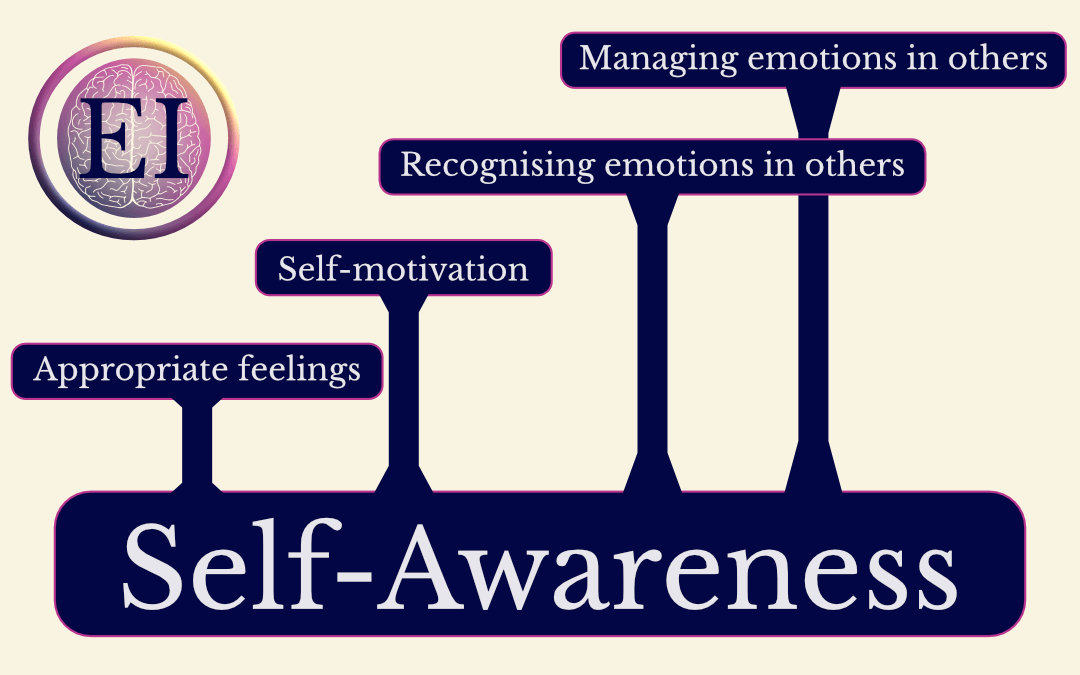
Self-awareness is the first step on your path to successfully using the other EI skills. Here’s what Susan’s conversation with Linda looks like after Susan learned and practised self-awareness. Let’s rewind.
Self-awareness in action
Susan knows this is a tricky conversation, and she wants to do well. So before she even goes into the meeting with Linda, she checks in with herself: “How do I feel right now?” Susan realises that she needs to use the bathroom.
Five minutes later, she is back in her office, waiting for Linda. Her shoulders are tense. Why? She’s been putting a lot of pressure on herself and this meeting because she really wants to get that promotion. But this tension is not helpful, so she does a couple of stretches and reminds herself that this meeting is really about Linda and helping her do a better job in the future.
When Linda arrives, Susan is relaxed, which is why she notices immediately that Linda is not. Her shoulders are tense. Susan remembers how stressful feedback meetings can be at a new job, so she makes an effort to relax her posture even more and take deep slow belly breaths.
She uses all the encouraging phrases she learned in her seminar and shares the feedback she has for Linda in as kind a tone as possible while also being clear. Susan notices that Linda has gone very stiff. Linda apologises, but does not sound sincere. Was that even a hint of blame in her apology?
A knot forms in Susan’s left side, just under the ribcage. That’s where anger is in her body, which is something she learned when she practised self-awareness. It’s just a reaction to Linda blaming her. Susan chooses to let the anger ebb away and dig deeper into what Linda is trying to tell her.

Susan asks Linda for feedback and makes sure to stay calm and open while she waits for the answer. Turns out Linda misunderstood the task. Together, Susan and Linda figure out what the problem was and come up with a communication plan for the next project. They both leave the meeting satisfied.
This time, the techniques Susan learned in her leadership seminar worked because she was self-aware throughout the conversation. That’s why self-awareness is the key Emotional Intelligence skill. Master it, and the other skills will not only work better but even become easier.
The What
What is self-awareness?
Self-awareness means that you know what is happening in your body and your mind as it is happening. You know what emotions are flowing through your body and what feelings you associate with those emotions.
For example, you notice your sweaty palms and feel your heart beating faster in your chest. You realise that you are nervous. That’s self-awareness. Knowing that you are hungry as soon as you get hungry, and not just when your stomach growls in desperation, is self-awareness. When you are self-aware, you take a break before your frustration turns into rage.
Self-awareness is truly the most important soft skill for a successful life. The best part: it can be learned and practised in 10 minutes a day. Before you jump into the exercises below, let me break self-awareness down into its 2 sub-skills.
Sub-skill 1: identify your emotions and feelings
If we are unaware of our emotions, we are at their whim because emotions and feelings influence every part of our lives. So the most basic and important sub-skill of self-awareness is the ability to answer this question:
“How do I feel right now?”

Acknowledging an emotion or a feeling already lessens its impact, especially if it is an uncomfortable emotion, like fear. It seems simple enough, yet a lot of people struggle to identify how they are feeling.
Why? Because we rarely ask ourselves and others this question. Instead, we practice ignoring our emotions and feelings. A lot of the things we do during the day are actually coping mechanisms to avoid our emotions.
You are bored. You don’t want to feel bored. So what do you do? You scroll through your social media feed. You feel sad, but you don’t want to feel that emotion. It’s such a downer! So you have some sugary fatty food instead.
After years of ignoring your emotions and feelings, it’s no wonder people don’t know how they feel any more. But you can change that today by doing the simple exercise below. Labelling your feelings will become easier every day.
Once you know how to answer the question “How do I feel right now?” it’s time to move on to the second sub-skill so you learn a healthy way to cope with emotions and feelings.
Sub-skill 2: feel your emotions
Emotions are the unconscious processing of an event. Feelings are the conscious interpretation of your emotions. This means that emotions trigger chain reactions in your body and your mind. An emotion like anger washes over your body in a wave that lasts up to 2 minutes. Yes, only 2 minutes. Unless you feed the emotion.
How do you do that? You keep thinking about whatever made you angry. Instead of just being angry with your colleague once, you suddenly remember all those times you were angry with different colleagues because your brain uses your emotions to organize your memories and pulls up anything that keeps you in your current emotional state. So instead of being angry for those 2 minutes, you might end up seething for hours or even days!

Definitely been there.
How do you avoid that? You feel your emotion and release it safely. Choose consciously to spend 2 uncomfortable minutes feeling that anger and save yourself hours or even days. The guided meditation below takes you through this process.
That’s it for the theory. Time to take action and practice your self-awareness skills.
The How
Exercise 1: Label your feelings
Do this exercise for 7 days:
1. Download the tracking sheet (MS Word) or make a copy of the Google Docs file or the Notion version.
2. Read through the list of emotions and feelings. If you notice that one is missing, add it to the tracking sheet.
3. Print the pages so you can carry them around with you or bookmark the digital versions. Put them somewhere you can see them.
4. Set at least 5 reminders for yourself (alarms, post-it notes, etc.) with the question “How do I feel right now?”
5. Over the next 7 days, track every emotion and feeling you notice. Every time you feel happy, put a line after happy. Whenever you feel sad, mark down sad and so on. Don’t worry about or question the emotion. Just notice and label it. Do this as often during the day as you can, but at least 5 times as soon as your reminders go off.
If this exercise is difficult for you at first, don’t worry. Like with all the other skills you have mastered, you will get better at this, too. Just keep practising.
Bonus exercise: Reflect
At the end of the week, reflect or journal about these questions:
- Which emotion or feeling have you had the most?
- Are there patterns? For example, how do you feel when you are at work or at home?
- Did you enjoy this exercise? If yes, what did you like about it? If no, why not? (I know. So meta.)
Alternative: How We Feel
Not a fan of pen and paper? No problem. Try the free app How We Feel instead. You can track your emotions and feelings as soon as you notice them, or set reminders to check in with yourself.
I loved doing the pen and paper exercise for a week because I got to see all my emotions in one place. But if you prefer the digital version, just set the intention to note every emotion in the app as soon as you notice it and you’re good to go.
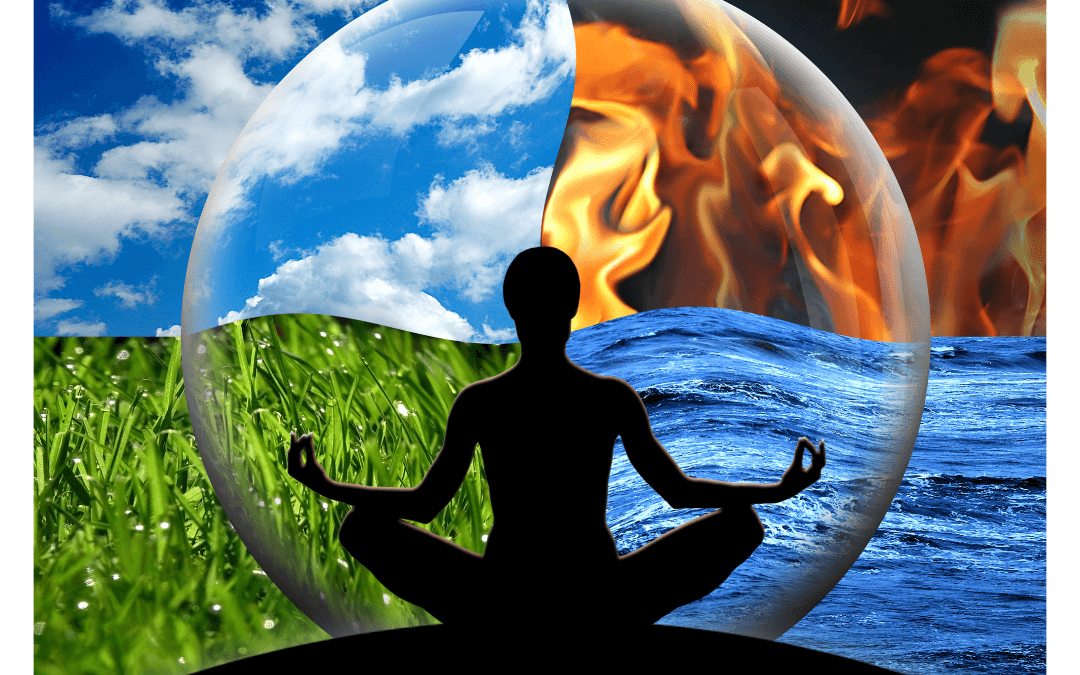
Exercise 2: Feel your emotions
Do this exercise once a day for as long as you feel like it. It will be easier if you practised labelling your feelings first.
1. Find a comfortable place to sit or lie down if you prefer.
2. Ask yourself: “How do I feel right now?”
3. Listen to the guided meditation.
Feel Your emotions
This exercise is particularly useful if you have feelings you found hard to identify or to notice. For me, it was frustration. I used to only notice that I was frustrated with a task when I was already angry. Once I did the meditation, I figured out that frustration is a knot underneath my left shoulder.
Now, as soon as I feel that part of my body tense up, I know that it’s time for a break. Self-awareness has saved me a lot of time and energy!
That’s it. Now you know why self-awareness matters so much, what it is, and how to practice your new skill. If it sounds too simple, try the exercises. Yes, they are simple and quick. You can do either of them in less than 10 minutes a day.
But they are not easy because most of us spend our lives suppressing, ignoring, and distancing ourselves from our emotions. Breaking out of these destructive habits takes courage and determination.
I know you have both because you read this far! You are ready to practice self-awareness, the most leveraged EI skill there is. So off you go. Start today.
